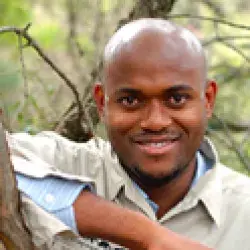Student weighs in on experience
Michael Gallagher, a student, writes for us in this post...
My name is Michael Gallagher, and I helped Nakedi put down camera traps around the Shangoni area recently. I had been in the bush before but always in very controlled areas...usually with no predators. Here is what I learned:
I am a student from Ireland who hopes to continue into the conservation world, so I volunteered with Nakedi. On my first day there, we got up early and headed out into the bush hoping to put down a few good camera traps. On the way there, Nakedi told me that the first priority if we see anything big or dangerous is to stand perfectly still and not make any noise, even if they charge. He said many animals mock charge and can stop just 1 metre before you. If this happens, he said the ranger would shoot it, but all I could think was if a lion started running at me, I don't think I would have a choice of running or not. I would for sure be frozen to the ground. And then he continued to warn me of buffaloes and rhinos, who apparently don't mock charge, and I should definitely run and climb a tree. Talk about baptism by fire! Anyway, we soon headed out into the bush, and at first, I was very cautious about walking with only one gun and many sorts of animals around, but I soon loosened up as Nakedi and Kaizer, the field guard, were very comfortable. We managed to put down a good few cameras that day but also saw a few stations that showed evidence of damage, mostly by elephants or hyenas. Luckily we didn't see anything big that day, only a few duiker and steenbok. However, the next day while we were putting down a station in a dry riverbed, Kaizer suddenly stood up and whispered at me to do the same. When I looked downstream I saw a huge bull buffalo just looking at us. Thankfully we were too far away to be considered a threat to him and eventually he walked off into the bush, but all I could think was they are not called 'black death' for no reason!
When we drove down to Skukuza later that week, I met many of the scientists and vets that work there and learned a lot about the way conservation works and the many different paths one can take to get there. This was an amazing experience, and I am so glad that I got the opportunity to see what Nakedi's work was like. It is incredible and an extremely noble cause. Save some of the interesting animals until I get on the scene!
What Mike forgot to mention about his time with us:
1. We had a heated debate about the best rugby team (country) in the world. He was for New Zealand’s All Blacks (where is Babu? We need your opinion here) and I was, of course, for South Africa’s Bokke….guess who had their facts right? The debate still continues.
2.We had a little game of “spot an animal." The one who spotted the most high profile animals won. The high rollers were: fat black mamba (2000 points, possibly game over); Leopard (1000 points); cheetah (500); lion (250); and the rest were lower (like little brown jobs of the birding world).
3. On the way to Skukuza, we stopped a group of tourists who stepped out of their vehicle and were walking towards the river (presumably) to pet a herd of hippos that were standing in the sun. When we stopped to warn them of the gravity of their situation, they looked at us, arrogantly shrugged their shoulders and said, “What?” I looked back and said, “Hippos will kill you, they are very dangerous animals," and then drove off. We later saw them at the next camp and they were all there, and we were relieved.
My version:
It was great to have Mike with us, and I learned a lot from him. He is disciplined and from the look of things, very determined. Kaizer and I enjoyed having him around. I hope his visit brought us a lot of luck with the leopard captures. Many thanks Mike!
The leopards
Currently we are working in the Letaba section of the park. We have so far sampled in four study sites, and in the next two months, we will have done six sites. I am still going through the images, some of which we will place on youtube as soon as possible.

